Preservation of Chongqing's oldest central business district: Success or failure?
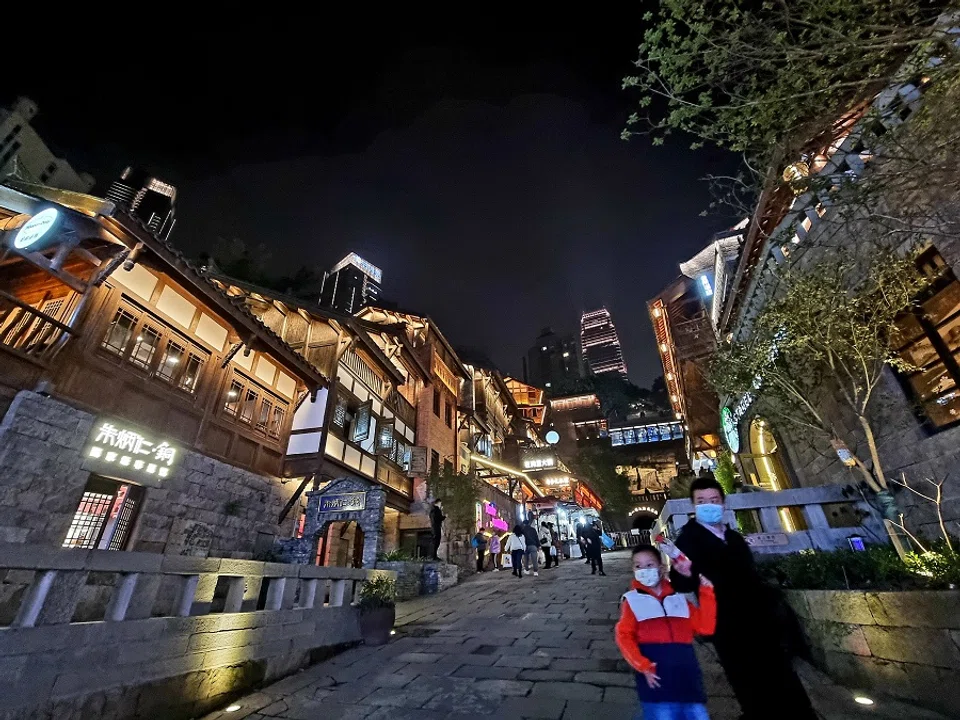
Chongqing's oldest central business district, Shibati (十八梯, lit. "18 steps") has more than a thousand years of history and has been in various stages of demolition and development for the past decade. Finally, it waved goodbye to its "dirty, old slum in the city" image with its reopening to the public in late September.
Now, Bayu-style architecture dot the hilly landscape and lights dance on the rooftops at night. It is as if the night scene of Hongyadong (洪崖洞, another major attraction) has been transposed on a gentle slope that emanates into a wider area, adding much vibrance to the night scene of Chongqing's "mother city", Yuzhong.
The first phase of this two billion RMB (S$426 million) project of Hangzhou Xintiandi Group opened to the public on 30 September, coinciding with China's National Day Golden Week holiday. Tens of thousands of people flocked to the area, to witness the glorious return of Shibati.
Over a million tourists visited Shibati prior to its grand reopening
Statistics show that eight days before its reopening, Shibati had already chalked up over a million tourists. On 2 October alone, a record 160,000 people visited Shibati. In comparison, Chongqing's top three scenic spots - Yangtze River Ropeway, Hongyadong, and Ciqikou - only attracted a total of almost a million visitors during the same period. Some netizens even teased, "Nobody is going to Ciqikou anymore now that Shibati has reopened."
However, when I recently visited Shibati over two consecutive weekends, I found that there were not many visitors and the streets were mostly empty. Compared with its grand reopening about a month ago, the crowds have suddenly disappeared. As the peak period of passenger flow during the Golden Week holiday came to an end, the travel craze to Shibati gradually eased as well.
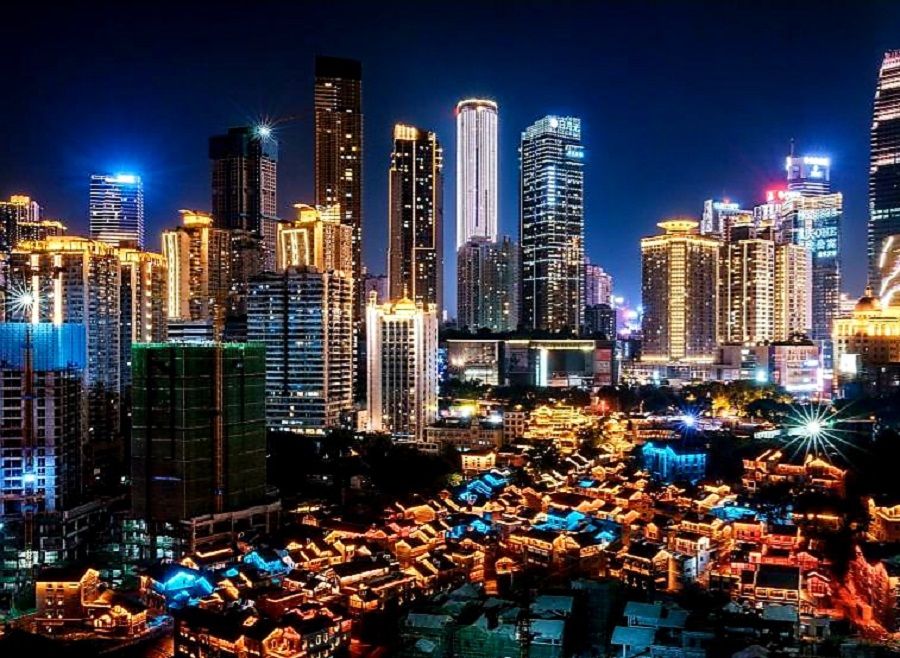
Tan Yansong, planning director of a Chongqing Shibati cultural development company under Xintiandi Group told Zaobao that Shibati indeed experienced a "sharp decrease in passenger flow" recently. He said this was due to the Covid-19 resurgence in Chongqing in early November and "the government's call for everyone not to gather or go out also affected Shibati".
On a Saturday in late October, before the Covid-19 cases swelled, Shibati welcomed 140,000 visitors in a single day. This goes to show that Shibati is still a popular spot and people "are still paying attention to it", Tan added.
...the place "had no vitality and was merely a soulless mummy". - Chinese visitor
Shibati's new look received mixed reviews from netizens
Although people rushed to visit Shibati when it first reopened, its new look sparked controversy and received mixed reviews online.
Many netizens were disappointed, commenting that Shibati "has changed beyond recognition" and that they "could not detect any trace of its rich cultural heritage". Others complained that "none of its history could be seen", and that the place has been "completely commercialised" and was "just another clone of Ciqikou". Some even commented that the place "had no vitality and was merely a soulless mummy".
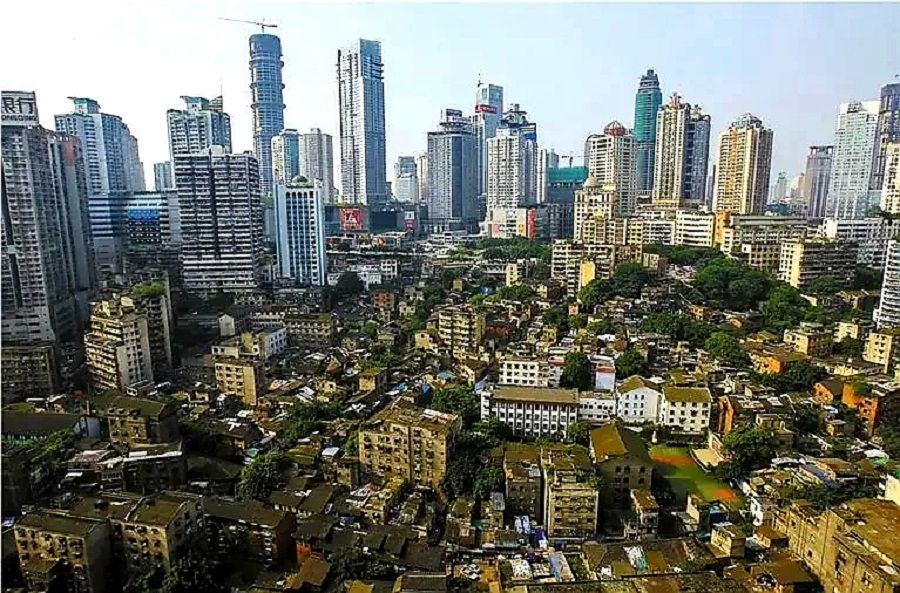
But there were also netizens who thought that "Shibati was too dirty and messy in the past", and saw the improved and transformed environment of an old town as "a kind of progress". Others said that the transformation was "already pretty successful" and would be even better if more work could be put into selecting retailers.
Developers not afraid of homogeneity in market
Recently, we-media writer Qing Shou (青手) published a long commentary which received much attention The article criticised the government for going down the "ancient street" route for the Shibati project simply because it was the "easiest" route, but this was also the "most short-sighted" route. The article said, "The start of this project is already a mistake. Shibati shouldn't be given up in the first place. Put it in the hands of developers, of course it would turn into a mall!"
Since Chongqing's first traditionally-styled commercial street Hongyadong was built in 2006, the "ancient street" model has been replicated numerous times in various districts in Chongqing, including Yuzhong's Dongshuimen (东水门) and Baixiangjie (白象街), which are scenic spots featuring traditional folk customs. With the addition of Shibati, it can be certain that homogeneity in the market and the competition that this engenders will only get worse.
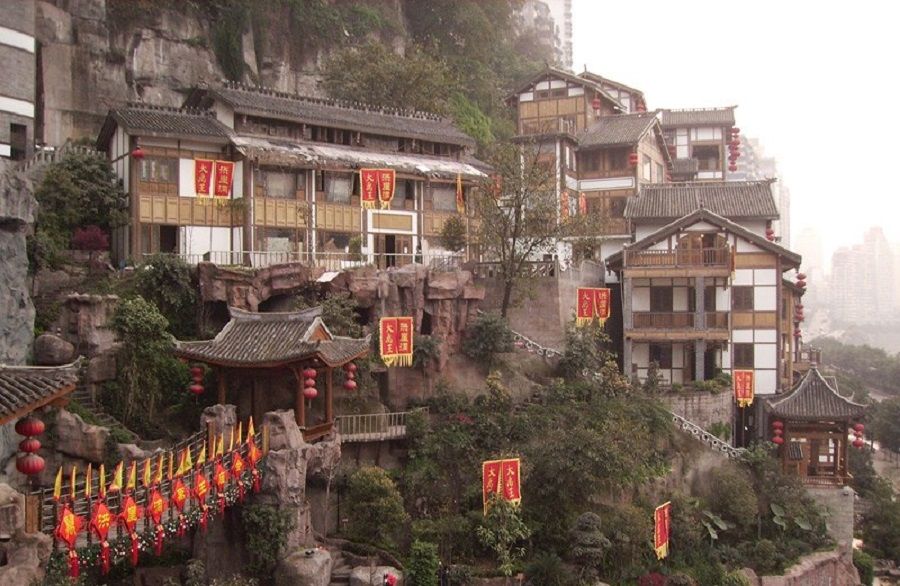
But Tan is not worried about possible competition with other attractions. He said that Shibati is not only larger than other ancient streets in Chongqing but also boasts a more diverse retail format. He explained that a 20,000 square metre lifestyle centre was currently being built at Shibati and would be opened in the next two years. Its main selling point would be its focus on the nightlife economy featuring pubs and nightclubs. These new lifestyle elements would help to meet the various entertainment and leisure needs of residents and tourists. In future, corporate banquets can also be held in Shibati, catering to the needs of all types of customers.
"This is just the first phase of our launch, and people may feel that it looks similar to other projects. But in the next one to two years after we have fully unveiled Shibati, there will be a range of activities and experiences for visitors to try." - Tan Yansong, planning director of a Chongqing Shibati cultural development company under Xintiandi Group
Tan was also optimistic that interest in Shibati could be sustained as it sits right by the Liberation Monument (解放碑), a historical landmark, and can tap on the tens of millions of visitors that the business district attracts each year.
In the face of substantial online criticisms, Tan said that the company remains unaffected by the negative public opinion and has no intention of responding to them: "We are also trying to take stock and reflect on how we can improve Shibati as a whole... We will certainly listen to constructive criticism and take up good suggestions. As for the bad ones, we will just ignore them. We still hope to look at the prospects of Shibati from a long-term perspective.
"This is just the first phase of our launch, and people may feel that it looks similar to other projects. But in the next one to two years after we have fully unveiled Shibati, there will be a range of activities and experiences for visitors to try," Tan added.
Tan also said that Shibati's lineup of retailers would be reviewed to ensure that the slate of stores available is attractive. At the same time, they may also be more selective about future retailers looking to set up shop in Shibati.
Different standards
Zou Xing (pseudonym), an operator of a popular tourist attraction in Chongqing, told Zaobao that the authorities have already informed industry workers not to comment publicly on Shibati, showing that they are sensitive to the criticisms that have surfaced recently.
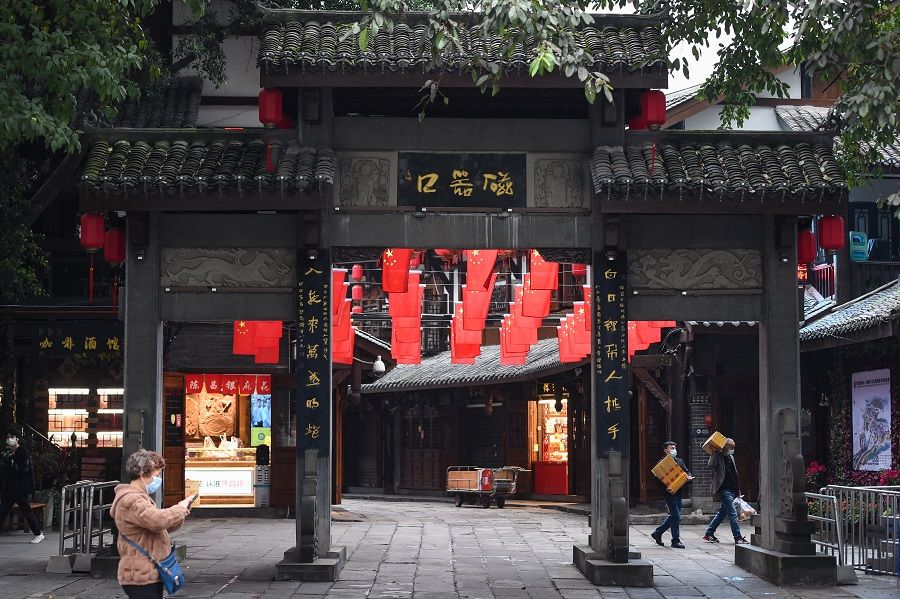
Zou analysed that the great gulf in opinions on Shibati among authorities, developers, residents and consumers lies in each having different benchmarks.
He explained that from the developer's point of view, the rate of tenancy is not bad, rental income is up to standard, and passenger flow during the reopening was great. On the other hand, the government would conclude that Shibati's architecture design met requirements, it opened for business as planned, and the city's image was improved.
According to official information, 127 stalls or about 90% of vendors were in operation on the opening day of Shibati.
Zou also revealed that the government did have something to say about the business at Shibati, including the lack of products and services to attract higher per capita spending, and a high level of homogeneity. "Generally, the government feels it is not perfect. But it is not that bad."
Visitors want to find their way home
But Zou pointed out that local residents are still looking for an emotional connection to the place. "Local customers want childhood memories, traces left behind amid urban development; they want to be able to find the way home so that we don't forget the past, to have this emotional link."
However, Shibati gives little consideration to such aspects, and lacks innovation, so that consumers might feel overlooked or even slighted.
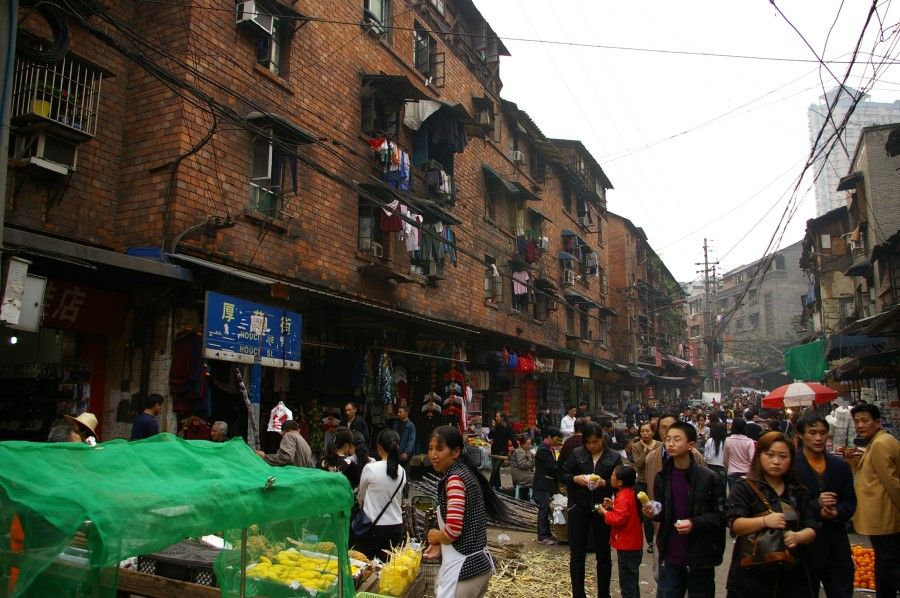
As for non-local tourists, they hope to get an idea of Chongqing and its way of life through Shibati. "But the place does not provide such scenes that allow us to spend an idyllic few days like a local... they sell stuff like items from the Hong Kong Police, which does not make sense to the consumer."
Zou feels that in the planning stages, not enough consumer research was done for Shibati, and not enough attention was paid to the tourist experience. "This shows that it is not people-centric."
Chongqing-based observer Mr Bai also criticised the government's pursuit of efficiency while lacking a feel for history. He said concentrated administrative power also made it easier for the people in charge of Shibati to call the shots on its development without seeking other views.
Bai also pointed out that the project's lack of experience was expected, given that it is the first urban redevelopment project in Hangzhou's Xintiandi district. He thinks that the government should tap on policies to intervene appropriately in developing Shibati, and systematically restore this old street that is so rich with historical memories, so that its development would be more sustainable.
In Zou's view, the opening of Shibati would lead to a surge in demand for transport, housing, and retail in central Chongqing, which is not completely bad news in the short term. However, operators in the city should also think long term, as he notes that if the poor reviews continue for Shibati, "all it will take is three to five years for this place to possibly die".
"Although the Shibati project developers tried hard to preserve as much as possible, the fact is what we see now is mostly all new. The historical memories are basically all gone." - Luo Zibo, director of the College of Tourism at Chongqing Normal University
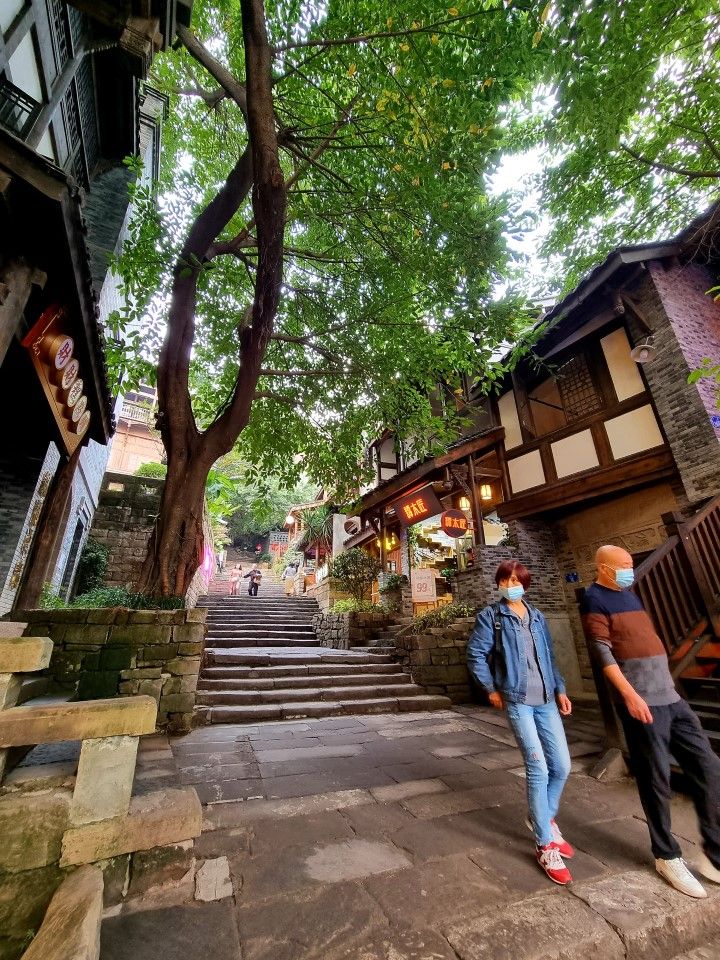
'Huge pity' to eradicate historical memory
Luo Zibo, director of the College of Tourism at Chongqing Normal University, said Shibati is the most representative old street in the heart of Chongqing city, and it was not surprising that the reopening saw many visitors as the place holds the memories of a generation. He felt the development was carefully designed, and can contribute something amid the current lack of tasteful leisure streets with substance in western China.
However, in terms of legacy, Luo said little of the original Shibati has been preserved, and whatever has been retained is buried amid the larger new surroundings, which would disappoint more sophisticated residents, while the eradication of historical memory is also a "huge pity".
Luo said: "Although the Shibati project developers tried hard to preserve as much as possible, the fact is what we see now is mostly all new. The historical memories are basically all gone, and it is quite lacking in terms of its overall look."
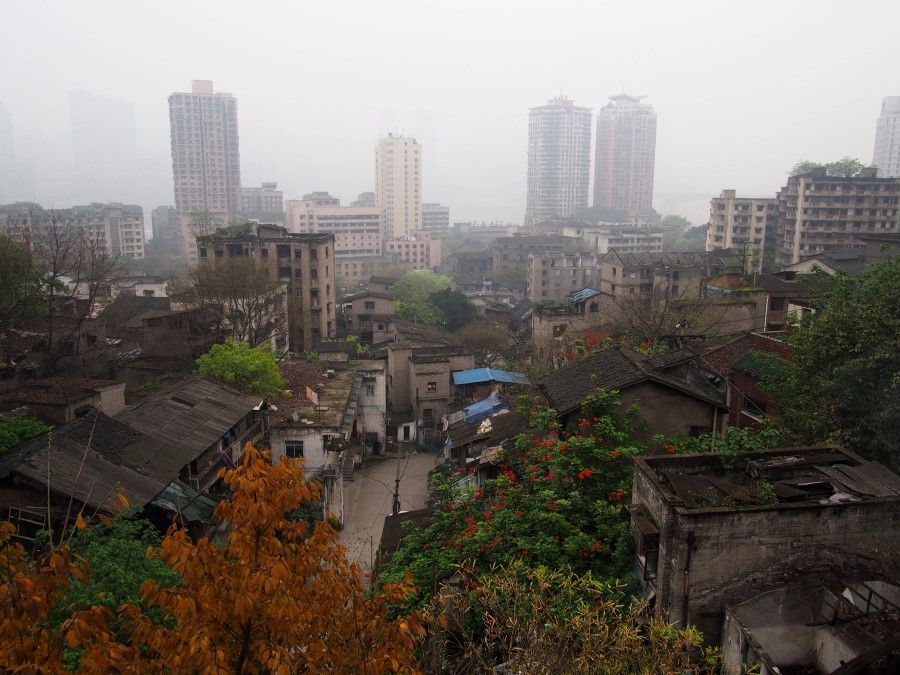
He felt that for an old street like Shibati with its traditional memories, more emphasis should have been placed on collective memories during its restoration, to bring back its old flavour. This means not touching the cultural elements, while integrating everyday functionality so that the modern crowd will want to hang around once they go in.
"People seek memories here. And even though they basically do not exist anymore, your restoration has to lead people to seek it." But Luo also admitted that doing so may not make business sense, and may be too difficult and time-consuming.
Shibati cannot be totally written off
On the online controversy, Cai Min of the School of Literature and Journalism at Chongqing Technology and Business University said netizens are mainly assessing Shibati based on their own tastes and values, which lack objectivity and a big-picture perspective.
He pointed out that before it was restored, Shibati was full of residential homes that were added on and stacked up since the days of the Republic of China. It was a vibrant, living, breathing community that told of historical evolution. However, it was very old and a major fire hazard.
"Such a place could not be redeveloped into commercial housing, or a gated community with residential buildings; that simply could not be done. Constructing high-rise buildings would definitely also attract criticism, and it would not pass muster in terms of urban planning. The compromise would be to retain the original style and showcase the culture and historical memories, keep the symbolism and rebuild the urban space," Cai said.
"Space and culture can be constructed. People did not approve of many things when they first came out, but slowly they were accepted." - Cai Min of the School of Literature and Journalism at Chongqing Technology and Business University

Cai felt that as the original Shibati residents were relocated, "the liveliness indeed went away". But while the scenic part of Shibati is now in a "new bottle", the original flagstone roads, some fig trees, and the general setting have not been damaged, so the project cannot be totally written off.
Shibati's "seven streets and six lanes" have been preserved in the scenic area with their original layout and look, along with seven historical buildings.
Cai also noted that with the reopening of Shibati, the upper and lower halves of the city are linked again, making it more convenient to move uphill and downhill, while improving the general scenes of day and night. "The Liberation Monument at the top is about globalisation and modernisation, while Shibati at the bottom is a symbol of localisation. The spaces are magically connected to form a unique cityscape that is convenient to visit. I think there are areas where it succeeds, it is not a complete failure."
Cai feels that Shibati now has an opportunity to turn things around, because it can keep learning and innovating and improving through conflicts and "collisions" of ideas. "There is a long way to go yet. Space and culture can be constructed. People did not approve of many things when they first came out, but slowly they were accepted."
Related: Egyptian-American architect: Is China's countryside losing its identity and rustic charm to mass tourism? | Liu Thai Ker and Ke Huanzhang: Urban planners are servants of the city | Preserving the hutong: "What's in it for us?" | Fire hazards plague Taiwan's ageing buildings and their residents, but is anyone fixing the problem? | Relocation, Relocation, Relocation: Who wants to be a Chinese millionaire | History, collective memory and the beauty of Taiwan's old train stations
